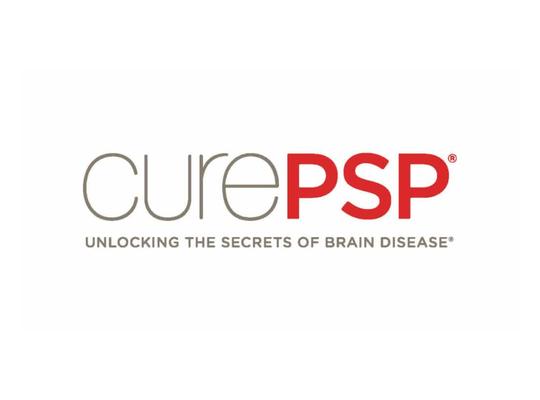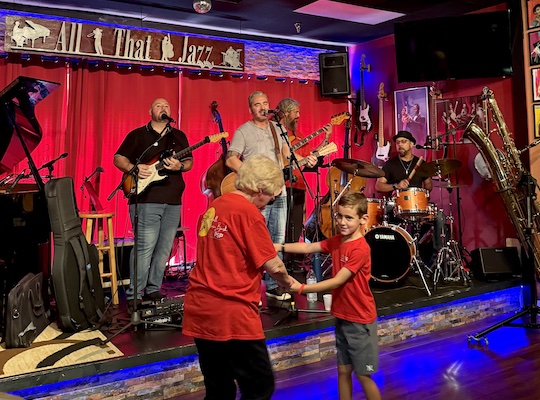CurePSP Awards Latest Urso Student Fellowship Grants
Aug 14, 2023 By Oscar Sullivan
CurePSP has awarded its latest round of Urso Student Fellowship grants to students and trainees conducting projects considered pertinent and valuable to future research for progressive supranuclear palsy (PSP), corticobasal degeneration (CBD) and related diseases. Supported by the Paul and Ruth Urso Memorial Research Fund, these projects may be in basic, translational, clinical or epidemiological aspects of PSP and CBD. The three recipients were all drawn to the complex barriers facing research of these diseases, and by working with experts they will be building on established findings to push the field forward. The opportunities afforded by these grants will help foster the next generation of researchers dedicated to furthering our understanding of PSP, CBD and related diseases, who are already contributing essential information.
Learn more about CurePSP’s Student Fellowships here.
Progressive Supranuclear Palsy: a disease specific mouse tauopathy model
Hania Qamar, a graduate student at the University of Toronto, recognizes the lack of an animal model as a barrier to understanding PSP and aims to generate a mouse model that would be the closest replica of how PSP presents itself in the human brain.
“This is an important first step in the realm of PSP research,” Qamar said. “And it’s necessary to provide this platform to help test future disease-modifying therapeutics.”
Receiving the grant feels special to Qamar because she has seen her uncle live with the neurological movement disorder dystonia for twenty years. She has seen the barriers that neurological disorders can cause and acknowledges the importance of quality of life for patients with rare diseases. Working with her mentor, Dr. Naomi Visanji, Qamar’s project will be the first to take human post-mortem material (including the tau protein) and inoculate transgenic mice in the same brain regions that are involved in early PSP in humans. There are three main cell pathologies characteristic of PSP that make it such a unique disease and Qamar’s model will attempt to display all three, which will be visualised using an immunohistochemical analysis (antigen test) of the mice brains. Once generated, this animal model will be a springboard for future studies with the potential to find new therapy targets and test prospective novel therapies according to Dr. Visanji.
“If we light the fire in one brain region then we can look at the progression of the disease to other distant regions and study processes involved in the spread of the disease other than just the tau protein,” Dr. Visanji said.
Adding to PSP’s complexity, the two note that the human brain expresses six versions of tau and these mice are the first to express all six versions. They credit the generosity of Drs. Gerard Schellenberg and Virginia Lee at the University of Pennsylvania for sharing these transgenic mice as gathering these resources can be a significant challenge to research. Following a close study of the mouse brains this summer, Qamar hopes to be able to report on the closest model of a PSP brain found in a lab today.
Investigation of the role of non-cholinergic PPTg neurons in a model of PSP
Hasnat Nuri, an undergraduate student at SUNY at Buffalo, seeks to further develop an animal model of PSP using mice by administering the tau protein in the brain region known as the pedunculopontine tegmentum (PPTg) to see the effects of abnormal tau accumulating in this region. The PPTg region is a cholinergic-rich area filled with neurons that PSP patients lack and seems to spread the disease to other parts of the brain. By better understanding the PPTg, Nuri hopes to help scientists develop treatments that could stop the spread of pathological tau out of the region. Nuri’s project will initiate the disease within the mice by expressing the tau protein in the PPTg region and then leting the mice age for fifteen months, a progressive model that should allow him to do a retrospective analysis of the disease process. He hopes that at the end of the fifteen months they will have an end-stage disease that they have been studying, which could allow them to identify a biomarker.
“Having a better understanding of this region and the neurons within it can help everyone in finding a cure and early treatment,” Nuri said. “I hope our research can give everyone more information so that we can work collaboratively as scientists.”
Nuri’s project takes mentor Dr. Stewart Clark’s initial findings a step further by not just removing neurons but making a living disease that progresses over time. The most attainable goal that the two see for the project is helping develop pharmaceuticals that maintain patients’ quality of life. The model would allow them to compare drugs like those made for Parkinson’s patients to see what would be most effective to help with issues like motor functioning. And if the tau aggregate produced ends up being PSP-like, then the two are cautiously optimistic of their chances to identify a biomarker of early disease.
“I would love to change the conversation to early PSP being five or ten years before we normally diagnose,” Dr. Clark said. “Even if we can get them two more years, that’s my hope for the biomarker.”
Testing Anti-Tau Properties of Integrated Stress Response Boosters In Vivo
Soyeon Park, an undergraduate student at Stanford University, will study the effects of injecting mice with Integrated Stress Response (ISR) boosters to see if cell death and tau levels are reduced, the potential first step of a PSP therapy. The Integrated Stress Response (ISR) is an important protein quality control mechanism in human cells, and people with weakened ISR are at increased risk for PSP and Alzheimer’s. The molecules identified by Dr. Lin’s lab boost ISR function and prevent tau build-up in cell culture models. Park’s project will inject these ISR-boosters into transgenic mice and hopes to see a reduction of cell death and tau levels. This could pave the way for future patient studies.
Park developed an interest in neurodegenerative diseases in high school when her grandmother became a Parkinson’s patient. She studied various pathogenic mechanisms of Parkinson’s, leading to the realization that we are still ignorant of so many parts of the brain.
“This obscurity is what attracted me to neuroscience,” Park said in her grant application. “Neuroscience research feels like discovering unexplored crevices no one has ever found before.”
Learn more about CurePSP’s research grants here.
Join our email list
Get the latest news and resources
directly to your inbox.
Get the latest news and resources directly to your inbox.
Sign Up



